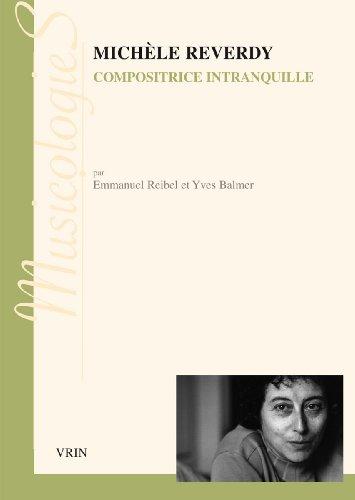Michèle Reverdy, compositrice intranquille

Cette monographie co-écrite avec Yves Balmer s’intéresse à Michèle Reverdy (1943-), qui occupe une position singulière dans le panorama contemporain : éperdument éprise d’expression, mais revendiquant la continuité historique du langage atonal, cette admiratrice d’Alban Berg cultiva une indépendance d’esprit qui la fit se heurter parfois au gout dominant. Nourri de nombreuses archives inédites, ce livre lève le voile sur un univers créateur très attachant, enraciné dans un passé mystérieusement obsédant dont la table de travail de la musicienne constitue l’inlassable exutoire. Il ressort un portrait sensible, non seulement de la compositrice, qui façonne ses œuvres tour à tour en architecte ou en peintre, mais aussi de la journaliste, de la pédagogue et de la femme « intranquille », livrée à une introspection continue. En contrepoint surgit alors une réflexion sur les relations qui peuvent s’établir entre un musicologue et un compositeur, et sur le sens qu’il y a à écrire un livre sur un artiste vivant.
Paris, Vrin, 2014, 198 p.
Comptes rendus : Avant-Scène Opéra, Resmusica, WebTheatre.
This text focuses on Michèle Reverdy, a composer born in 1943 who occupies a unique position in music today: enamoured with expression but asserting the historical continuity of atonal language, she has cultivated an independence that sometimes brings her face to face with the preferences of the day. Her work is nevertheless played around the world and championed by prestigious performers. An admirer of Alban Berg, she has worked with author Pascal Quignard and filmmaker Raoul Ruiz, and has achieved success in all genres.Based on many unpublished archives, this book sheds light on a touching creative universe that has its roots in a mysteriously haunted past that finds its outlet in the musician’s work. It draws a sensitive portrait of this “disquiet” woman who is a composer (and seeks correspondences with architecture and painting), journalist and teacher, and is constantly looking inwards. The book also reflects on relationships that can develop between musicologists and composers, and the significance of writing books on living artists.